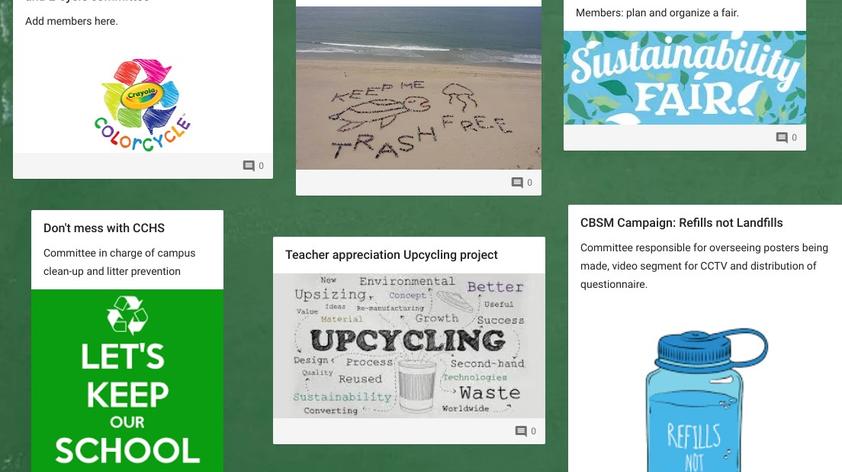
Environmental Club: Eco-warriors Unite!
As the competition has risen for college admittance and the pressure for getting into a good school increases, students have had to find a way to set themselves apart from their classmates. It is important for students to show that they have interests outside the standard curriculum the school provides and to be involved in their school by participating in extracurricular activities. Colleges want to see that students are actively involved in not only their school’s campus, but also the surrounding community.
A good way to do this is by joining a club. Starting an environmental awareness school club is a great way to motivate people to care about the environment and increase awareness of the issues the world is facing. Knowledge is important, but the club should be based on stewardship and be participatory in nature in order to encourage young people to take action in their own school and community.
One of my duties as a teacher at Cathedral Catholic High School (San Diego, CA) is to take on the role of a club advisor. This means I am responsible for helping to facilitate the club meetings and any off-campus activities the club may plan. At this time, the Environmental Club at my school meets in my classroom every other week during lunch. Historically, the Environmental Club has not been effective in engaging students in conservation issues.
For example, students would just watch movies (i.e. Bee Movie) without any discussion or dialog concerning a connection to environmental stewardship or conservation. As part of my coursework in the Advanced Inquiry Program, the graduate program through Miami University, Ohio, and San Diego Zoo Global, I created an independent study project to research the steps in creating and running an effectiveenvironmental, or “eco-awareness,” club. How could I help my students develop a club that would be fun but would also be a meaningful learning experience? I started this project by reading a multitude of articles and I interviewing teachers from neighboring school districts in order to learn about what makes a strong student-led club and what successes/challenges other teachers had experienced.
I then used the information to create a master calendar for my own eventual club and crafted other resources that our club members can use to communicate and stay organized. I also summarized the steps we will take while implementing the club revision into a strategic plan and set of goals for the revamped club.
I quickly learned the role of the teacher or club supervisor should be that of a facilitator capacity only. It is recommended that students be given the chance to take the lead by choosing the club activities and projects while the supervisor is simply there for guidance. Once the core membership has been established, it is time to meet to brainstorm the club’s vision and start deciding on the objectives of the club.
The next step is to advertise for club membership to let people know when and where meetings will take place. The first meeting is a good time to decide on activities and projects that can be completed throughout the year, and it is important to establish subcommittees to create additional leadership opportunities. This allows different members to take the lead on different activities. It is imperative that members feel involved in order to retain interest and membership!
I also learned that it is a good idea to formulate a group-organized, year-long project that will benefit the campus and involve the student body. Developing a timeline to follow and delegating specific responsibilities for the members to oversee is a critical part of this process.
In addition, it is beneficial for the club to host or sponsor special events to increase visibility. Examples of this might be volunteering with community organizations, organizing beach cleanups or a field trip to a nature center. Another popular idea is to host an Earth awareness or sustainability fair on campus to promote pro-environmental living and to educate the rest of the student body about important “green” issues. In light of this, our club has chosen to host a fair to highlight their community-based social marketing campaign (CBSM) they will do as their year-long project, as well as showcase the AP Environmental class’s CBSMs.
I am very excited to implement the restructuring of the Environmental Club! The first thing I would like to do next year is to have the students rename our club and then create t-shirts for our members to build a sense of belonging and pride. Then we will proceed with the steps that I developed during my independent study to make our club the best it can be!













